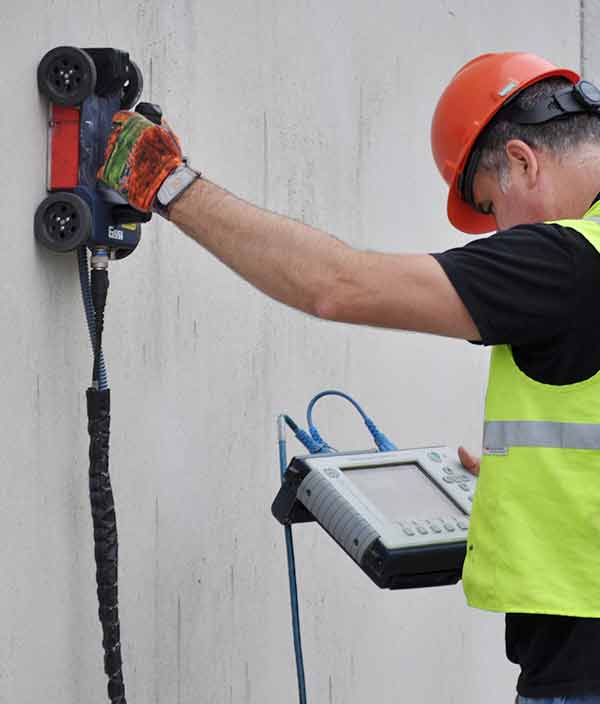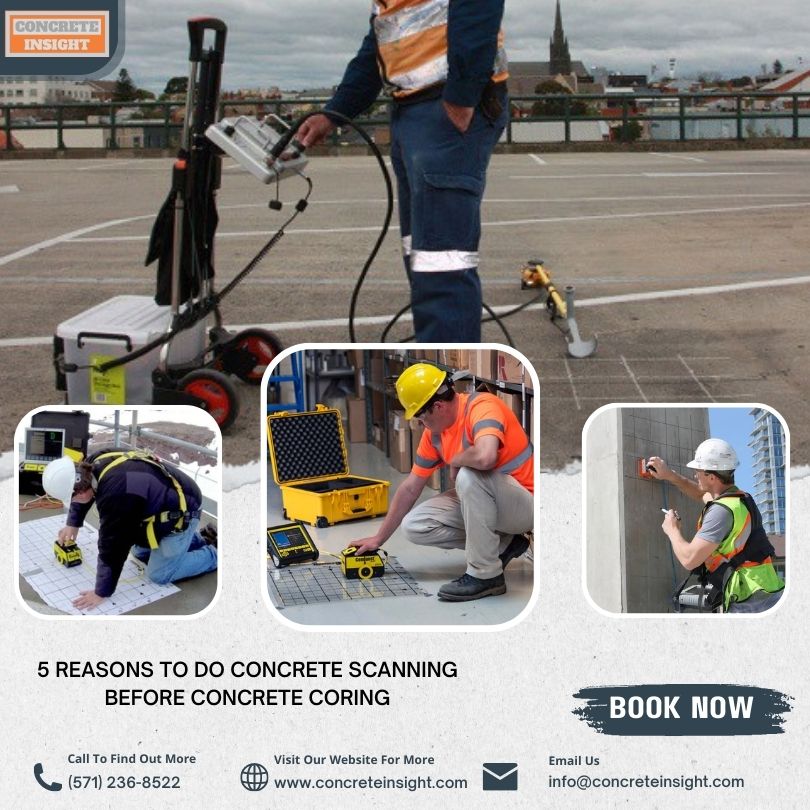Unveil the Transformative Power of Concrete Scanning in Taking Full Advantage Of Efficiency and Security
Concrete scanning has actually arised as a vital device in the construction industry, providing unequaled advantages in boosting task performance and ensuring safety standards. The transformative power of concrete scanning lies in its capability to provide real-time data and in-depth insights, reinventing exactly how tasks are planned and executed.
Value of Concrete Scanning
Making certain the architectural integrity and safety of building jobs starts with the important step of performing detailed concrete scanning. Concrete scanning is a non-destructive technique used to detect and map subsurface components within concrete structures. This process is crucial in determining potential threats, such as rebar, post-tension wires, and avenues, that might be concealed within the concrete. By using innovative innovations like ground-penetrating radar (GPR) and electro-magnetic induction, building groups can accurately find these elements without causing any type of damage to the framework.
In addition, concrete scanning helps in optimizing project timelines and budget plan by avoiding unexpected costs and hold-ups that might occur due to unpredicted blockages within the concrete. Inevitably, investing in detailed concrete scanning is a proactive approach that improves both performance and security in building and construction tasks.
Just How Concrete Scanning Works
Concrete scanning operates as a critical device in building and construction tasks by using innovative innovations to spot and map subsurface aspects without creating architectural damages. Ground Penetrating Radar (GPR) and Electromagnetic Induction (EMI) are two primary methods made use of in concrete scanning.
During the scanning procedure, the information accumulated is assessed in real-time, permitting prompt identification of possible risks or obstacles below the surface. This details help in decision-making, making sure that building and construction activities proceed securely and successfully. Additionally, 3D imaging software application can be used to create comprehensive maps of the subsurface components, additionally boosting job preparation and execution. By employing these sophisticated innovations, concrete scanning dramatically reduces the threat of pricey damages and injuries on building websites.
Benefits of Concrete Scanning
One of the main advantages of concrete scanning is the capacity to discover and find ingrained items such as rebar, post-tension cables, and conduits precisely. Concrete scanning helps in planning and developing more properly, as it provides exact details regarding the location and deepness of structural components.

Study: Concrete Scanning Success

In another situation, a building and construction company used 3D concrete scanning to examine the problem of maturing concrete frameworks in a historical building. The in-depth scans offered important insights into the level of deterioration and aided prioritize upkeep initiatives successfully. By proactively attending to locations of issue identified with scanning, the company had the ability to extend the lifespan of the framework and ensure resident safety.
These case researches highlight the transformative power of concrete scanning in boosting efficiency, precision, and safety in building jobs.
Implementing Concrete Scanning in Projects
Executing sophisticated scanning innovations during building and construction projects has actually ended up being significantly essential for boosting accuracy and security. By integrating concrete scanning right into project preparation and implementation, building and construction teams can identify potential risks, such as rebar or post-tension wires, hidden within concrete frameworks. This proactive method reduces the risk of accidents, hold-ups, and costly rework, inevitably resulting in much more efficient project timelines and budget plans.
To execute concrete scanning successfully, project supervisors ought to work together very closely with experienced scanning professionals to identify the most suitable scanning go to my blog strategies for the details project requirements. Involving scanning professionals from the beginning of a project makes it possible for the group to develop thorough scanning plans that attend to vital areas of concern and make sure extensive information collection.
Moreover, including concrete scanning right into normal project workflows can enhance more decision-making procedures, as real-time check information gives prompt insights right into the problem of concrete frameworks - Concrete Scanning. This data-driven technique helps with educated problem-solving and enables groups to make modifications without delay, cultivating a culture of performance and safety and security throughout the job lifecycle

Conclusion
To conclude, concrete scanning plays a crucial duty in improving efficiency and safety and security in building projects. By utilizing sophisticated innovation to discover and map out underlying structures within concrete, this process aids to stop pricey blunders, ensure architectural integrity, and lessen dangers on site. With the ability to uncover hidden elements and offer exact information, concrete scanning shows to be a beneficial tool for maximizing job outcomes and making the most of overall success.
Concrete scanning is a non-destructive method used to identify and map subsurface components within concrete structures. Furthermore, concrete scanning aids in enhancing task timelines and spending plan by staying clear of unforeseen expenses and hold-ups that may arise due to unexpected obstructions within the concrete. One noteworthy situation study involves a large renovation job where concrete scanning played a critical function in making sure project success.In an additional situation, a construction company used 3D concrete scanning to examine the problem of aging concrete frameworks in a historical structure. By incorporating concrete scanning into task planning and execution, construction teams can identify prospective hazards, such as rebar or post-tension cords, hidden within concrete frameworks.